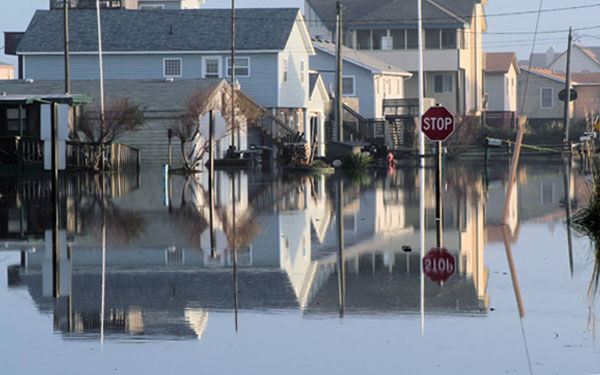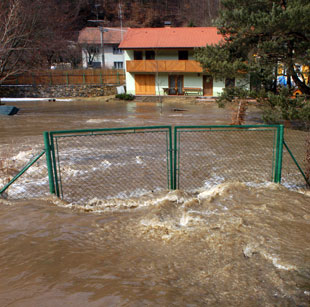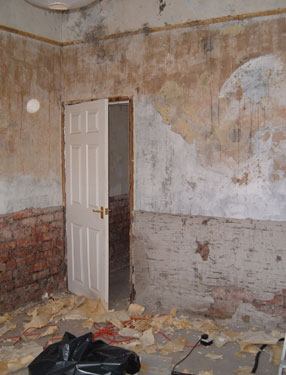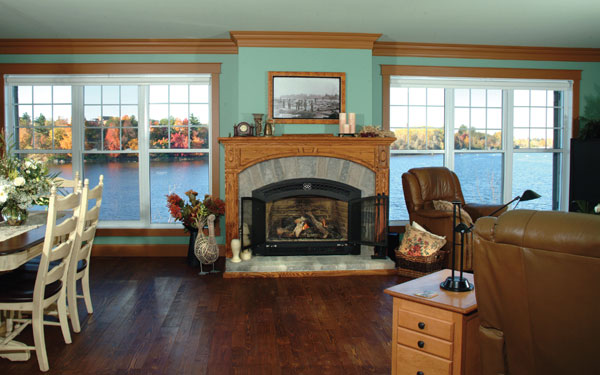 by Jennifer Jones
by Jennifer Jones

From hurricane drenches to rivers overflowing, flooding in your home is a very unfortunate disaster. Sometimes homeowners get fair warning that the flooding will occur, but it is never enough time to protect and remove everything in the house. Even if you get all your items removed, the house itself will sustain substantial damage to its walls and floors. In order to avoid cleaning the home twice, be sure that there is no possibility of more flooding by checking local reports from several different sources. Patience and teamwork will be the key for a successful cleaning.
 The first step for a safe and effective flood cleaning is to take some time to gather a helpful team, sit down and discuss a plan with specific objectives. Before entering the house, inspect the exterior for structural damage so that you are confident it is safe to enter. Discontinue electrical power to the house by tripping the main circuit breaker. For basement homes that contain the main breaker, consult a professional utility electrician for assistance after all the floodwater has been pumped out of the lower level. The electrician knows how to properly remove breaker boxes, spray with a cleaner and check for ground faults. It is especially important when dealing with water that you are aware of any live wires and take proper precautions to reduce the chance of electrical shorts. Also, remember to switch off gas lines at the meter or tank on the outside and ventilate gas fumes from inside the home.
The first step for a safe and effective flood cleaning is to take some time to gather a helpful team, sit down and discuss a plan with specific objectives. Before entering the house, inspect the exterior for structural damage so that you are confident it is safe to enter. Discontinue electrical power to the house by tripping the main circuit breaker. For basement homes that contain the main breaker, consult a professional utility electrician for assistance after all the floodwater has been pumped out of the lower level. The electrician knows how to properly remove breaker boxes, spray with a cleaner and check for ground faults. It is especially important when dealing with water that you are aware of any live wires and take proper precautions to reduce the chance of electrical shorts. Also, remember to switch off gas lines at the meter or tank on the outside and ventilate gas fumes from inside the home.
Once you are certain it is as safe as possible to enter the house, take pictures of the damage before beginning the cleaning process. Immediately contact your insurance company and leave your name, address and phone number so they may contact you in order to provide an adjuster to access the damage. Accurate records of the repair bills, item losses and flood-related living expenses should be supplied to your insurance agent as soon as possible.
There are a lot of supplies that you will need to properly clean the home. Large plastic tubs, plastic-lined cardboard boxes and sturdy garbage bags will be used to transport soggy belongings. Protective clothing, such as rubber gloves, hard sole shoes, a quality mask with filter and goggles, need to be worn when inside the house to safeguard against contaminated water. Microorganisms thrive in moist conditions and proper precautions need to be taken to avoid allergic reactions and other health hazards. If tools are required, use a generator or battery operated tools to avoid reactivating the power to the house. Essential cleaning equipment includes detergents, anti-microbial liquids, large sprayers, squeegees, pressure cleaners, scrubbing brooms, mops and buckets. Remember to use your common sense and keep children away from the contaminated areas as well as the cleaning supplies.
Now it is time for damage control. Everything in the home will have to be removed, packed into the bins and intensely scrubbed and cleaned. Begin by making a footpath through the home and pulling out items. Recruit a good friend with a non-contaminated space, washing machine and dishwasher to start cleaning household items. Even if it appears to be untouched from the flood, remove everything for proper cleaning with anti-microbial products. All kitchenware should be washed in a dishwasher as well as all fabrics, clothing, linens and shoes need to be sent through a washing machine. Hard surfaces that are non-porous, like plastics and metals, can be cleaned and allowed to dry. Hard furniture with wood surfaces need be scrubbed with mild detergent and then dried completely with dehumidifiers and fans. Upholstered furniture needs to have the contaminated water removed with a water extraction vacuum and allowed to dry. Then it should be intensely scrubbed with cleaning solution, dried once more and inspected to determine if it is still safe for use. Unfortunately, there will be a large amount of belongings that will just have to be discarded. Books, papers, soft toys, pillows, cushions, electronics and appliances are most likely included in this throw away pile. If you are questionable about an item’s safety, a professional can be called to test it for mold and other dangerous contaminants.

Once every single item has been removed from the home, you are ready to focus on the floors and walls. Pressure wash everything from inside the walls and framework to the carpet and floors. Add detergent to badly soiled carpet, and consider replacing if it is damaged beyond cleaning. Also, inspect plywood subfloors that may have separated and need to be replaced. If the floor consists of a porous material that is especially hard to completely clean, it is recommended that it should be removed and thrown away. Ceramic tile and linoleum that was placed over concrete can be cleaned. However, it will have to be removed if it was placed over wood flooring since the wood subfloor may warp causing tile breakage. Mop, towel dry and apply an anti-microbial cleanser to the floor and everything that has come into contact with the floodwater. To avoid mold, be sure the subfloor is completely dry before installing new carpeting, tile or other flooring.
Wallboard can be cleaned and dried in place if the seams are still intact and there is no noticeable swelling. Many people recommend completely removing the Gyprock, otherwise known as plasterboard used for lining internal walls, instead of trying to clean it. This removal is also beneficial for airing out the wall cavity and timber frames of the home. Insulation that has come into contact with the water will have to be discarded as well. Since it can feel and smell quite repulsive, be sure to use thick gloves and ample protective clothing when removing insulation. Additionally, circuit breakers that were waterlogged need to be replaced once the interior of the home has completely dried.

View Lake House Plans
The clean up process can take several weeks and even months, however, it must be done properly in order to live in a healthy home. After allowing everything to dry and installing new walls and floors, you are almost ready to get a new lease on life. Now is the time to pick new paint colors for the rooms and get a new perspective on this disaster. The hard work has paid off and you are ready to re-decorate and move back in to your home sweet home.
Here are some related articles:
- Keeping the Outside Out: Roofing Materials
- Lake House Maintenance
- Protecting Your Home From Storm Damage
- Safe Rooms
- Storm Preparedness: Before, During and After
Save this article to:
back to top